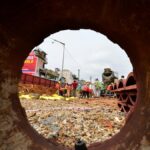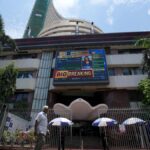In a blow to the Karnataka government and Deputy Chief Minister D.K. Shivakumar’s ambitious tunnel road project in Bengaluru, the expert committee appointed by the Karnataka Urban Development Department to review the Detailed Project Report (DPR) has said that DPR had been prepared in a hurry, relying on only four soil test points for planning the tunnel, far ‘too few’ for a project of this scale.
It also echoed concerns raised around the proposed project’s impact on one of the city’s biggest lung spaces, the Lalbagh Botanical Garden.
“Positioning one of the tunnel shafts within Lalbagh Botanical Garden needs to be re-examined because of environmental sensitivity,” it recommended..
The committee, headed by Siddanagouda Hegaraddi, Executive Director (Civil), Bangalore Metro Rail Corporation Limited (BMRCL), highlighted major shortcomings in traffic studies too.
Why tunnel road when metro will serve same corridor
The expert panel highlighted that the proposed tunnel runs almost parallel to the planned Namma Metro line. The report noted that both the projects are designed to serve the same north-south corridor of Bengaluru, and that without clear data on how many people will shift from private vehicles to metro or buses in the coming years, the justification for such a costly project cannot be verified.
“The general apprehension of stakeholders is that the road tunnel project on the proposed alignment will become redundant as it is running almost parallel with the proposed metro line. This apprehension could not be addressed in the absence of breakup of peak hour traffic data with modal share and projected peak hour traffic data,” the committee observed.
Without accurate traffic data, lane requirements, toll projections, and congestion estimates remain unrealistic. “The DPR documents should clearly illustrate the justification to overcome such apprehensions of the stakeholders with adequate data and analysis,” the report recommended.
Weak traffic studies, lack primary data
Traffic studies were flagged as ‘particularly weak’ by the government-appointed expert panel. The committee noted that the DPR lacked primary data, relying instead on reconnaissance surveys and assumptions with no field surveys conducted. No original measurements were taken to support lane and alignment recommendations. Key details such as mode-wise distribution of commuters, projected peak-hour traffic, and expected modal shifts to BMTC buses, metro, and suburban rail were missing.
Noting that the analysis based on Level of Service, or LoS (rating of how smooth or congested traffic is), to arrive at lane configuration requirement could not be verified, the committee recommended: “The traffic projections to arrive at the lane requirements should be based on details in terms of Passenger Car Unit, or PCUs (a way to count different vehicles on the road as if they were all cars to calculate total traffic flow), duly taking into account the modal share and estimated modal shift due to other competing modes of transport, such as BMTC, Namma Metro lines, and suburban rail, instead of LoS basis.”
Other technical issues included entry and exit ramps and intermediate lane configuration. While the committee acknowledged that ‘efforts have been made to locate the entry/exit ramps in the vicinity of existing signal-controlled junctions to avoid traffic conflicts’, it warned that these ramps could cause congestion due to merging traffic emerging from tunnel and surface traffic. Intermediate lane configurations at Palace Ground and Mehkri Circle were said to be insufficient, with the committee recommending that ‘a minimum of two-lane configurations should be provided for entry and exit ramps’.
Mismatch of ‘horizon year, lane configuration’
The committee pointed out that the DPR considered a ‘horizon year’ (future year for which traffic projections are made) of 2041, which is just 10 years after the project’s expected completion, instead of the standard 25-year period required for such infrastructure projects. Based on the available traffic data, demand for the year 2041 would justify only 2+2 lanes with paved shoulders. However, the DPR proposes a 3+3 lane configuration, which meets the 25-year projection. The committee said this mismatch means that either the horizon year needs to be corrected to 25 years, or the lane configuration needs modification.
Tunnel road lacks strategic, transport & environmental case: Mobility Expert
According to a comparative analysis by mobility expert Sathya Arikutharam, who analysed the reports by the Directorate of Urban Land Transport (DULT) and that by the expert committee to review the DPR, both the committees independently found that the Tunnel Road Project lacks a strategic, transport, and environmental case.
In his analysis, Mr. Arikutharam pointed out that DULT’s formal review in November 2024 had already warned that the proposed North–South Tunnel Road was not aligned with the city’s Comprehensive Mobility Plan (CMP) or Climate Action Plan. It had suggested that the erstwhile BBMP reconsider the project and explore only short tunnel segments wherever necessary, but the civic body ignored these recommendations. Instead, BBMP went ahead and commissioned the DPR even before the review process by the Bengaluru Metropolitan Land Transport Authority (BMLTA) was completed.
Even on the technical side, both reports found the traffic study to be fundamentally flawed.
Mr. Arikutharam notes that neither the feasibility study nor the DPR included primary traffic data, meaning no field surveys or real-time traffic counts were conducted.
Published – October 13, 2025 10:55 am IST



















